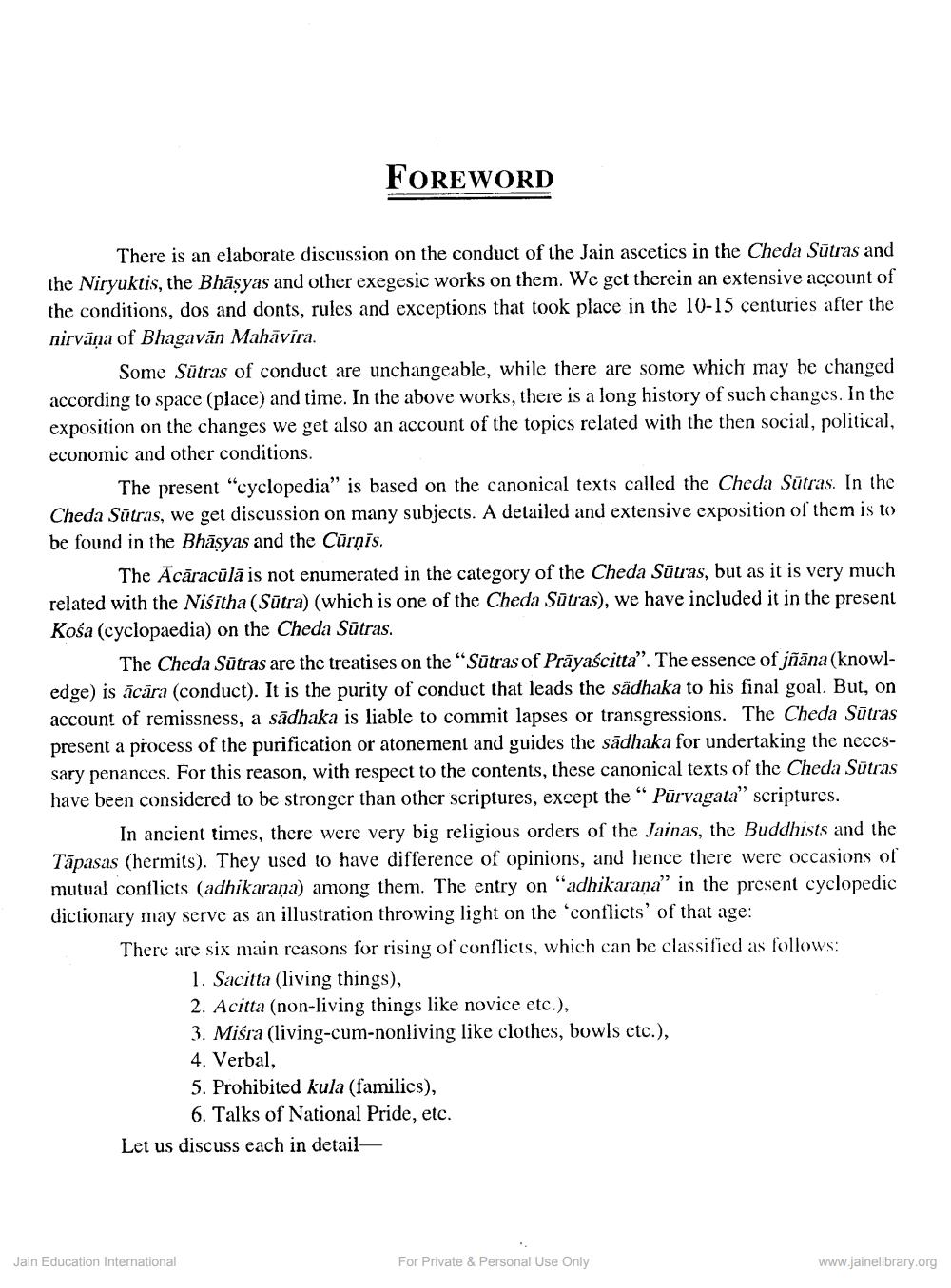________________
There is an elaborate discussion on the conduct of the Jain ascetics in the Cheda Sutras and the Niryuktis, the Bhāṣyas and other exegesic works on them. We get therein an extensive account of the conditions, dos and donts, rules and exceptions that took place in the 10-15 centuries after the nirvana of Bhagavan Mahavira.
FOREWORD
Some Sutras of conduct are unchangeable, while there are some which may be changed according to space (place) and time. In the above works, there is a long history of such changes. In the exposition on the changes we get also an account of the topics related with the then social, political, economic and other conditions.
The present "cyclopedia" is based on the canonical texts called the Cheda Sutras. In the Cheda Sotras, we get discussion on many subjects. A detailed and extensive exposition of them is to be found in the Bhasyas and the Cornis.
The Acaracula is not enumerated in the category of the Cheda Sūtras, but as it is very much. related with the Nisitha (Sütra) (which is one of the Cheda Sütras), we have included it in the present Kosa (cyclopaedia) on the Cheda Sutras.
The Cheda Sutras are the treatises on the "Sutras of Prayaścitta". The essence of jñāna (knowledge) is acara (conduct). It is the purity of conduct that leads the sädhaka to his final goal. But, on account of remissness, a sadhaka is liable to commit lapses or transgressions. The Cheda Sotras present a process of the purification or atonement and guides the sadhaka for undertaking the necessary penances. For this reason, with respect to the contents, these canonical texts of the Cheda Sutras have been considered to be stronger than other scriptures, except the "Purvagata" scriptures.
In ancient times, there were very big religious orders of the Jainas, the Buddhists and the Tapasas (hermits). They used to have difference of opinions, and hence there were occasions of mutual conflicts (adhikarana) among them. The entry on "adhikarana" in the present cyclopedic dictionary may serve as an illustration throwing light on the 'conflicts' of that age:
There are six main reasons for rising of conflicts, which can be classified as follows:
1. Sacitta (living things).
2. Acitta (non-living things like novice etc.),
3. Misra (living-cum-nonliving like clothes, bowls etc.),
4. Verbal,
Let us discuss each in detail
Jain Education International
5. Prohibited kula (families).
6. Talks of National Pride, etc.
For Private & Personal Use Only
www.jainelibrary.org




